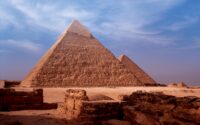As COP28 Looms, Real Estate Markets In The UAE And Saudi Go Green
Ahead of the upcoming COP28 summit hosted in Dubai, real estate markets in both the UAE and Saudi Arabia have made significant strides in prioritising sustainability, contributing to national commitments towards environmental, social, and governance (ESG) principles.
This has been underpinned by government initiatives, as well as businesses prioritising their sustainability needs, according to global consultancy, Knight Frank’s latest report – THE ESG Imperative – COP 28 Edition.
DUBAI’S AMBITIOUS GROWTH AND ESG ASPIRATIONS
As Dubai continues to experience rapid growth and development, the emirate is forecast to significantly expand its population in alignment with Dubai’s Economic Agenda, D33. The city aims to double its foreign trade and become the world’s fourth most prominent financial centre by 2033, positioning itself just behind New York, London, and Singapore. Simultaneously, Dubai’s population is expected to reach nearly six million, with the government’s 2040 Urban Plan targeting 7.8 million residents by 2040.
To meet these population targets, Dubai will need to almost double its current housing stock, which currently comprises approximately 600,000 homes. Notably, the demand for villas in Dubai has driven prime property prices up by 16% over the past 12 months, reflecting the city’s appeal to the world’s ultra-rich. Despite Dubai’s rapid expansion, there is a notable commitment to sustainability in the Middle East, amidst the ongoing global climate emergency.
While ESG is still a relatively embryonic concept in the Middle East for many, we find that it is manifesting itself in the real estate market in different ways. Residential buyers in the region, for instance, are more concerned about access to green space and air pollution levels than their global counterparts. (See The ESG Imperative: The View From The Middle East)
Faisal Durani, Partner – Head of Research, MENA, commented: “In the office market, the queue of international occupiers willing to pay premiums to secure buildings with ESG credentials, be it LEED, WiredScore or WELL is growing. And this swell in demand for ‘greener’ offices in large part stems from the inextricable link between high quality office space and talent attraction and retention. The challenge for regional markets, unlike many other global gateway cities, is Grade A office occupancy levels widely in excess of 90% in cities such as Dubai, Abu Dhabi, Riyadh and Jeddah, all of which also have very slim development pipelines, most of which is already spoken for”.
Ben Walker, Partner – Head of Project and Building Consultancy, added: “Most businesses in Dubai, particularly those of an international variety are actively seeking prime Grade A space, with a strong preference for green-rated buildings. Many have a global mandate to occupy green buildings, as seen to be actively responding to the climate emergency plays a significant role in attracting and retaining talent”.
The emirate’s sustainable drive is best exemplified in the transformation of Expo City Dubai, Knight Frank says. The former host location of the 2020 World Expo is being repositioned as a sustainable, human-centric smart city, which aims to reuse at least 80% of the infrastructure put in place for the 2020 Expo and features LEED Gold and Platinum-certified buildings.
Durrani continued: “Dubai is home to 563 green-rated buildings, making it the only city in the region to rank among the world’s top 25 cities for the highest number of environmentally accredited buildings; however, the bulk of these are rated with local green-systems. This is a challenge for international institutions on the hunt for assets rated with globally recognised ESG credentials. While some occupiers are keen to be in a ‘green’ building, regardless of the ESG badge, some multinationals will not settle for anything less than LEED”.
Knight Frank also highlights the challenge faced by aging office stock in the city, much of which will need to be refurbished, or likely face a future of rising void periods, diminishing rental returns and potential obsolescence, or a change of use.
Mohamed Nabil, Head of Project & Development Services – MENA, added: “Refurbishment offers a unique opportunity to revitalise communities while minimising the environmental impact. Instead of tearing down and starting from scratch, retrofitting and repurposing existing structures allows us to honour the history and character of the built environment, maximise the value of existing materials, reduce carbon emissions, and minimise the ecological footprint associated with new construction, all while breathing new life into aging buildings, thus contributing to a more sustainable and culturally rich future.
“The reality is that developers and landlords need to carefully weigh up their options when thinking about refurbing, or demolishing and rebuilding. Some buildings may not be suitable for the retrofit required, while it may be cost prohibitive for others to be refurbished. The key to unlocking success is placing the occupiers of the space at the heart of design decisions, especially for office buildings. The user experience trumps all other considerations when future proofing an asset, either existing, or new.”
Knight Frank highlights that 51% of office stock in Dubai’s DIFC – the emirate’s premiere office hub – was completed prior to 2010, while across town, the average age of office buildings in the Internet and Media Cities is 16 years.
Durrani said, “For a city that moves at the speed of light, without refurbishment and a strong embrace of ESG considerations, many of Dubai’s older commercial buildings will likely face operational challenges in the near future”.
SAUDI ARABIA
A similar problem exists in Riyadh, Knight Frank says, where for instance, 50% of office space on King Fahd Road and 84% of office space on Olaya Road is over 5-10 years old. And with King Abdullah Financial District fully committed, the divergence in rents between Grade A and Grade B space is likely to continue widening as occupiers zero in on the best buildings.
Riyadh’s Grade A offices, with a 97% occupancy rate, are attracting international blue-chip businesses committed to sustainability, particularly those with ESG ratings, mirroring the phenomenon playing our globally, according to Knight Frank’s recently published report, Sustainable Saudi: Exploring the ESG Vision.
Nabil commented: “Occupying green buildings allows businesses to showcase their commitment to sustainability, fulfil corporate social responsibility, and attract and retain top talent.”
In Riyadh, developments like Business Front, King Abdullah Financial District, Laysen Valley, and Business Gate command the highest rental rates, reflecting the growing demand for new or modern developments with a strong focus on community living and sustainability, Knight Frank highlights.
Separately, NEOM, the US$ 500 billion super-city on Saudi Arabia’s Red Sea coast, aims to become the world’s most sustainable city and a global benchmark for green developments upon completion. It will house over nine million people across 300,000 homes, contributing to the Kingdom’s growing concentration of green-rated buildings.
Durrani explained: “International institutions are likely to be clamouring for a slice of NEOM’s US$ 80 billion IPO in 2024, given that sustainability sits at the core of development plans. Even amongst Saudi’s themselves, NEOM’s sustainability commitments ranks as the third most popular reason for wanting to invest in the Belgium-sized project, behind its positioning as the crown jewel in Vision 2030 and the promise of world class educational facilities”.
Furthermore, the launch of ESG disclosure guidelines by the Saudi Stock Exchange in 2021 further reinforces the importance of ESG reporting and awareness in the local market. In this dynamic landscape, forward-thinking developers recognise that to captivate large multinational or international tenants, green building principles and ESG must lie at the heart of their designs.
GREEN FINANCING AND GOVERNMENT DEDICATION
Sustainable financing is on the rise in Saudi Arabia, with initiatives like the Public Investment Fund’s successful completion of two international green bond issuances totalling US$8.5 billion, according to Knight Frank.
In Dubai, the government has been actively legislating for a greener future through various policies and initiatives. Notably, the world’s largest single-site solar power plant is currently in operation, supplying 15% of the emirate’s energy needs, and there is a target to achieve 75% of power generation from renewable by 2050. Additionally, the government has set a goal to construct 35% of all buildings using 3D printing by 2030. These green commitments have also led to a significant declaration that 60% of the emirate’s land area will be dedicated to nature reserves.
As the world readies for COP28 in Dubai, the United Arab Emirates and Saudi Arabia’s proactive adoption of sustainable practices in their real estate and business sectors positions them as key players in the global effort to address climate change and create a more sustainable future. These initiatives reflect their commitment to ESG principles and serve as a blueprint for other regions to follow in the quest for a greener, more sustainable world.






